Does bear spray work? It’s a question anyone headed out to hike in Glacier National Park may want to ask. Montana and most of the Pacific Northwest, among many other states in the United States, are bear country. This means it’s possible you could come across a bear in the wild. Should you bring the spray? Will bear spray work? Can it protect you?
Let’s take a look and see what bear spray really does.
Does Bear Spray Work?
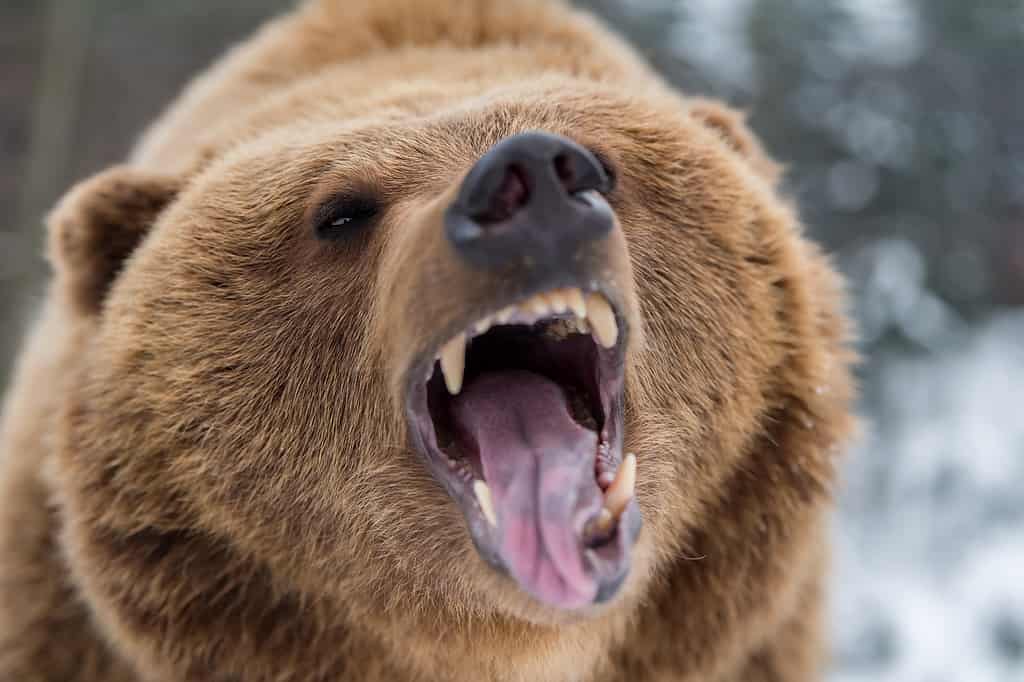
Bear spray works about 98 percent of the time, but you have to know when and how to use it. And you have to have to use all of it in some cases.
©Byrdyak/ via Getty Images
The short answer is yes, bear spray works. But only in the right conditions, which means using the proper bear spray at the proper time and with the correct technique.
When to Carry Bear Spray
Whenever you go hiking, camping, canoeing, fishing, or otherwise into bear country, you should carry bear spray. However, some parks, both regional and national, do not permit bear spray of any kind. Check with park regulations before entering with a canister in hand.
When to Use Bear Spray
The only time bear spray should be used is when a bear attack is imminent. This does not mean when you see a bear in the distance or when you’ve stumbled upon one in a clearing. If you see a bear, have your canister at the ready but do not use it unless the bear comes within 60 feet of you.
How to Use Bear Spray
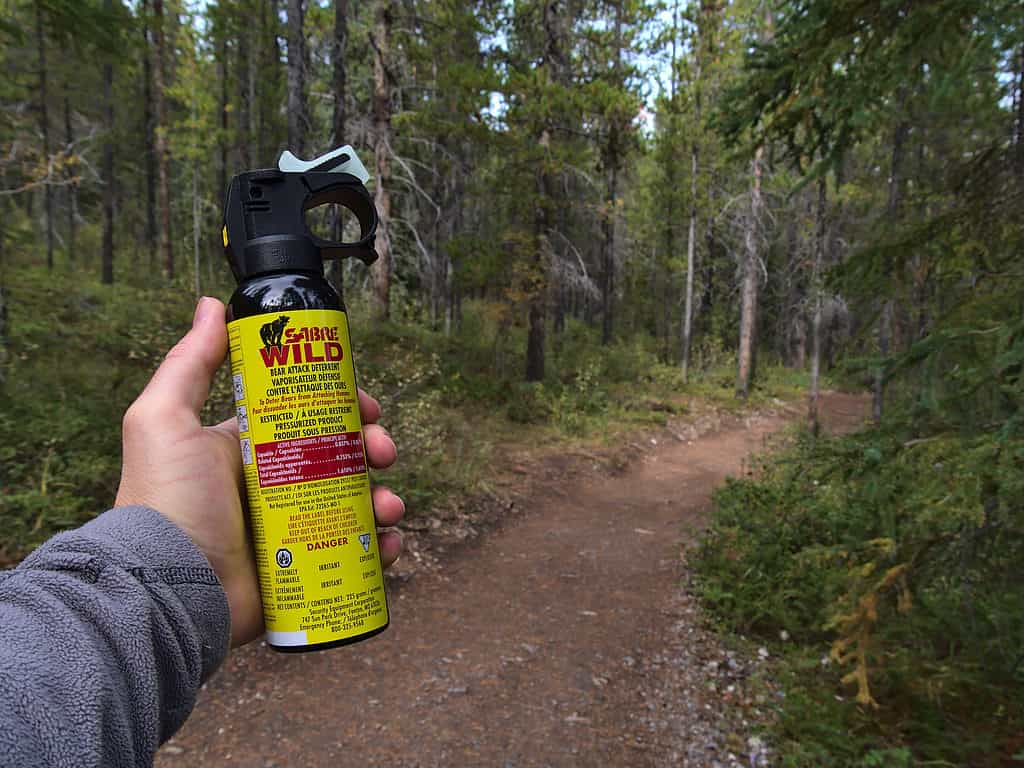
Know how and when to use bear spray safely. When you do, bear spray works to help ward off bear attacks 98 percent of the time.
©iStock.com/Timon Schneider
Proper use of bear spray is the key to its effectiveness. The following steps may help save your life, the lives of rangers or other hikers, and the rest of your group.
- Know when to use bear spray. It is not always prudent and can, instead, provoke a bear to attack. When a bear is charging you is the only time bear spray should be used. It must be within 60 feet or it will not reach the bear’s face.
- Know how to use the spray properly. Practice using the spray before your hike. Practice pulling the canister from its holster and removing the safety trigger. Do not discharge the bear spray while practicing, however, or it will not be effective if you need it out on the trail. You can also purchase an inert can for training purposes.
- If a bear attacks or charges you, spray a cloud between yourself and the bear. This may be enough to deter the bear, but if it continues, spray multiple times or empty the can.
- Point the canister at a slightly downward angle and shoot the spray toward the bear to create this cloud.
- Be aware that strong winds, snow, rain, and cold weather may all impact the effectiveness of the spray.
- The spray is not a warning but an irritant. It will not deter the bear from charging if it simply smells the spray. It should be used properly to create the proper irritation effect.
- Ensure you have the correct EPA-approved bear spray. Do not use cheaper knock-off versions. They are not as effective as the EPA-approved brands and may cause more trouble than protection.
How Effective is Bear Spray?
When used properly, that is targeting the eyes, nose, and mouth of a non-overly aggressive bear, bear spray is effective 98 percent of the time. The spray must be “fresh” enough (that is, not past the expiration date) and used accurately.
The spray is made with oleoresin capsicum, a concentrated oil from hot peppers, much like standard pepper spray.
No bear spray is 100 percent effective, however, so it should not be assumed that if you’re carrying it you’re fully protected.
Does Bear Spray Work for All Bear Species?
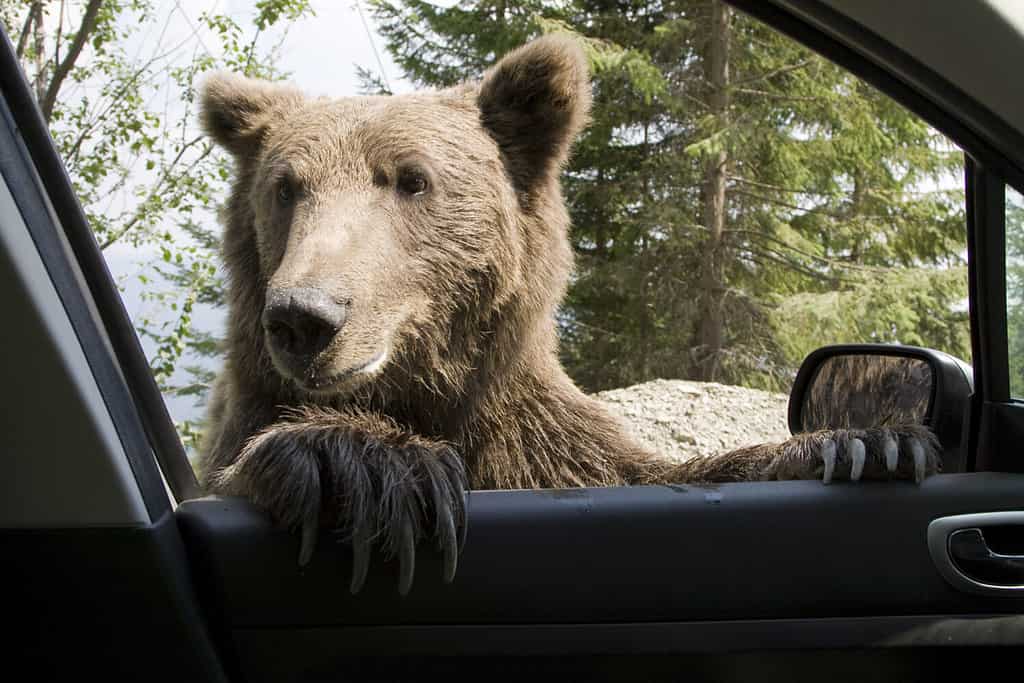
Studies have shown that bear spray works even on larger bears like grizzlies and polar bears.
©MihaiDancaescu/Shutterstock.com
Every bear species could potentially be influenced by bear spray. The spray isn’t species-specific, targeting a particular type of sensitivity. Rather, the spray inflames mucus membranes in the eyes, nose, and mouth to disorientate the animal. In fact, bear spray works on any mammal, including moose, elk, badgers, and other dangerous critters.
Even in cold, windy environments, bear spray has been shown to ward off polar bears and grizzlies. Many regions have regulations about bear repellents, however, like Yosemite National Park, which doesn’t allow bear spray of any kind.
What Happens When Bear Spray is Used on Bears?
The main effect of bear spray on bears is disorientation. They often lose vision for a few minutes and often stumble from you (the threat). Aggressive bears, however, may still try to attack. This is particularly true if you didn’t manage to spray their eyes and noses.
What to do After Using Bear Spray
If you must use bear spray, the first priority is leaving the area immediately. Get away as quickly as possible to a distance of at least several hundred yards away. Ideally, get further away to avoid potential aftermath troubles.
Then, ensure that no one in your group is harmed severely. Use your first aid kits for any minor injuries and call or send for help for anything more severe. Get further away from the area if at all possible before dealing with these injuries.
Is Bear Spray Harmful to Humans?
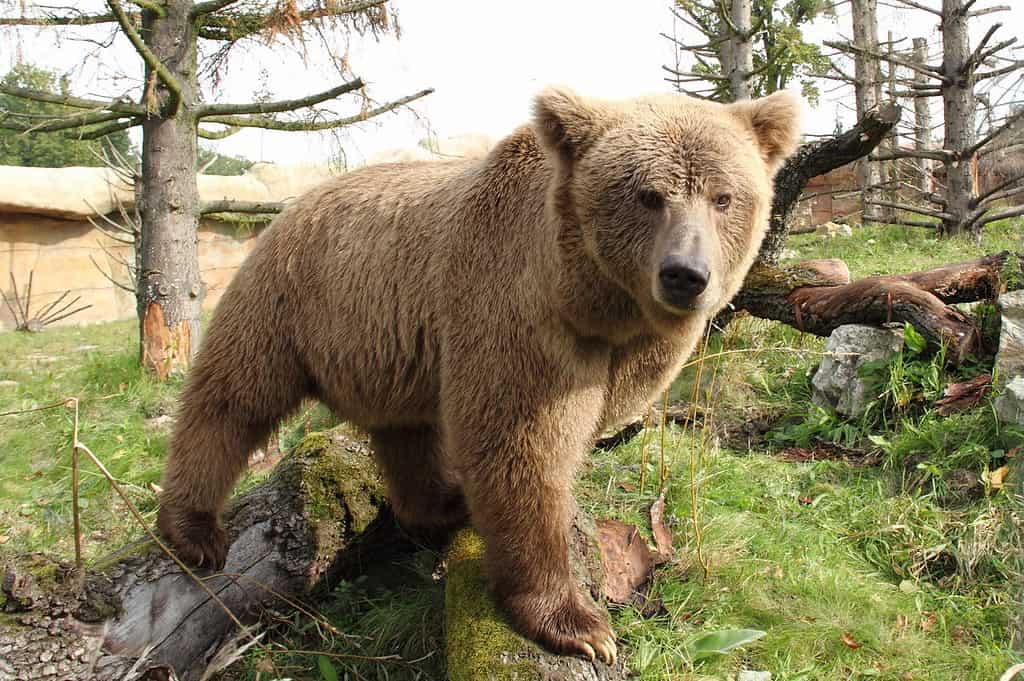
Bear spray works on every species of bear and it works on humans, too! The capsicum spray hurts humans with its peppery burning sensations. Some folks feel significant pain while others are irritated by it for days.
©Zoo Hluboka / CC BY-SA 4.0 – License
While it’s not serious or life-threatening, yes, bear spray may harm humans. Irritated eyes, itchy noses, temporary loss of vision, and similar symptoms are reported on accidental discharge. Other folks may experience significant pain and irritation of the eyes and skin, which may last anywhere from several hours to several days.
Bear Spray is the Last Resort
Never count on bear spray for protection against bears. Instead, use it as an absolute last resort when you’ve already practices standard safety precautions and found yourself in an unusual situation, face-to-face with a bear.
Most often, bears and humans interact when people surprise them at close range. Thick, bushy trails and heavily forested areas are most often the settings for these encounters. Riverside moments also occur, as the noise of human activity may be washed away by the sounds of the water.
Educate and prepare yourself and others against bear encounters as your first step and bear spray as your last defense.
How to Avoid Bear Encounters
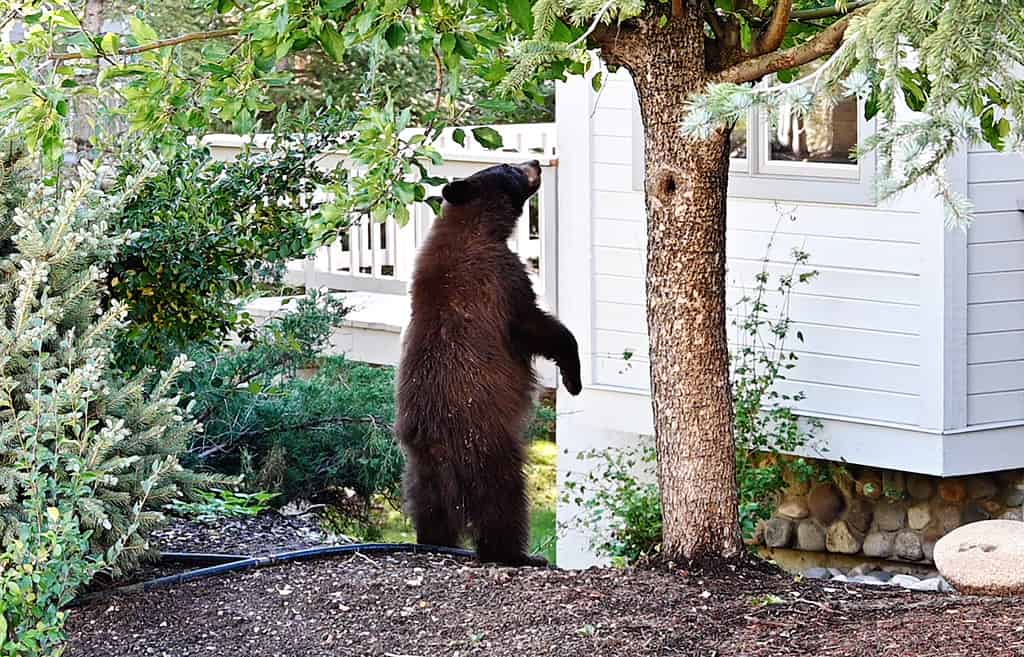
You could technically encounter a bear at home. Bear spray works here, as well, but you must use extra precaution as a trapped bear is even more dangerous. Avoid leaving windows, doors, and garages open to help prevent the animals from getting into your space.
©steverts/iStock via Getty Images
The best thing you can do is seek to avoid bear encounters altogether. Yes, these giant animals look like fuzzy, cuddle bugs, but they are anything but friendly to humans in the wild. They may not attack but there’s no telling if they could. So, it’s best to avoid them altogether.
As you enjoy the great outdoors where bears make their homes, try these things to help keep yourself safe against bears.
- Never hike alone. Instead, hike with at least three or four other people that you enjoy talking with and make a gab-fest of it.
- Make noise as you hike. This is part of why hiking in groups with folks you enjoy chatting with comes in handy. You can also clap, sing, and occasionally shout (but don’t scream) to help deter bears from happening upon you by accident.
- Recognize the signs of nearby bear activity. Notice things like bear scat, paw prints, wild edible berry bushes in season, etc. These are all evidence bears could be nearby.
- Check with the local forestry department for updates and notices about bear activity. Avoid hiking on trails and in areas where recent bear activity has been reported.
- Keep food, toiletries, garbage, and other scented or aromatic items tightly sealed in bear canisters. Place these in bear lockers while camping and hiking.
- If you do come across a bear cub, avoid finding yourself between the mother and cub.
- If you find yourself anywhere near a bear, make sure you never get closer than 100 yards.
The photo featured at the top of this post is © USFWS Mountain-Prairie / CC BY 2.0 – License / Original
Thank you for reading! Have some feedback for us? Contact the AZ Animals editorial team.






